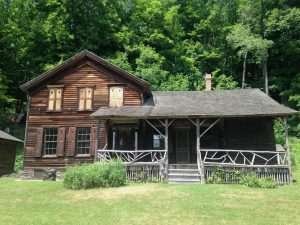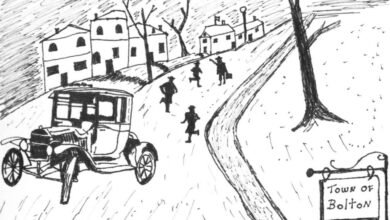Rediscovering John Burroughs at Woodchuck Lodge


 Before visiting the John Burroughs Memorial Site in Roxbury, New York, I didn’t fully grasp the depth of his influence.
Before visiting the John Burroughs Memorial Site in Roxbury, New York, I didn’t fully grasp the depth of his influence.
I knew of Burroughs as a naturalist and writer, familiar with his collaborations with figures like John Muir and Theodore Roosevelt. His name is often mentioned within the larger context of environmentalism, but that was about the extent of my understanding.
It wasn’t until I made the journey to the Catskills that I truly began to appreciate who he was and the singular voice he brought to American nature writing.
What I didn’t know was that Burroughs was born in Roxbury, in the heart of the Catskill Mountains, a place that would shape his views and writing. I hadn’t realized that his friends included the likes of Henry Ford and Harvey Firestone, two industrial giants whose legacies contrast sharply with Burroughs’ environmental ideals.
And it wasn’t until I read his words aloud, as my father drove us through the villages of Delaware County, that I understood just how powerful a writer Burroughs was. His writing wasn’t just informative — it was transformative. In a single passage, he could shift your perspective, turning the mundane into something extraordinary.
Reading Burroughs’ prose while traveling through the landscapes that nurtured his imagination made the experience feel deeply personal. The Catskills, which are so central to his work, seemed to hum with an energy that echoed his words.
It was a simple pleasure — a shared moment between my father and me — that will linger in my memory. Burroughs’ ability to weave scientific observation with poetic expression is unparalleled. His descriptions of nature are not just observations; they evoke a profound sense of what it means to be alive. His words elevate the everyday — squirrels seem more ingenious than humanity’s greatest inventors, and the delicate beauty of a snowflake becomes a reminder of the world’s fleeting wonders.
The John Burroughs Memorial State Historic Site, also known as Woodchuck Lodge, is a place of quiet contemplation. It’s a fitting tribute to a man who saw the world differently. At the site, the landscape itself feels like a continuation of Burroughs’ writing.
The Catskills shimmer with a timeless quality, their beauty undisturbed by the march of time. It’s no wonder that Burroughs, after traveling widely, chose to return here and make this his home.

 Woodchuck Lodge is more than just a memorial; it’s an invitation to pause and reflect. The memorial itself is understated yet powerful. One of the most striking features is a plaque etched with Burroughs’ signature. The plaque is set into the rock, bending and curving as if the rock itself is shaping the tribute.
Woodchuck Lodge is more than just a memorial; it’s an invitation to pause and reflect. The memorial itself is understated yet powerful. One of the most striking features is a plaque etched with Burroughs’ signature. The plaque is set into the rock, bending and curving as if the rock itself is shaping the tribute.
Burroughs called this rock “my boyhood rock,” and it’s clear that the natural world was at the heart of his sense of self. His connection to the land is palpable; it’s as if the rock itself holds a piece of him.
The memorial site offers just enough information about Burroughs’ life to deepen one’s appreciation of his legacy. It’s a place that is both educational and inspiring, yet it remains undisturbed. There’s a sense of reverence here, not just for Burroughs but for the natural world he celebrated. The site invites visitors to consider the complexities of his life — a man who was both a writer and a recluse, a friend to industrial magnates yet a staunch defender of nature.
In an ironic twist of history, Burroughs was close friends with Ford and Firestone, two men who represented corporate power and environmental degradation. Ford, in fact, spent two weeks with Burroughs at Woodchuck Lodge, helping clear rocks from the land. It’s fascinating to imagine the conversations they must have had during that time.
Burroughs’ meticulous observations of nature remain relevant today. His writing blends the rigor of science with the creativity of storytelling. He was a master of conveying the complexities of the natural world in a way that made them accessible and meaningful. His work is not just about the things he observed; it’s about how we, as humans, relate to them.
Walking through Woodchuck Lodge and reflecting on Burroughs’ work, I was reminded of the importance of returning to the earth—returning to the places that shaped us. Burroughs found his home in the Catskills, and it’s a place that continues to speak through his words.
For me, visiting Woodchuck Lodge was a way of connecting with that legacy, a quiet reminder of the power of nature and the writers who help us see it more clearly.
Photography by George Cassidy Payne
Source link





